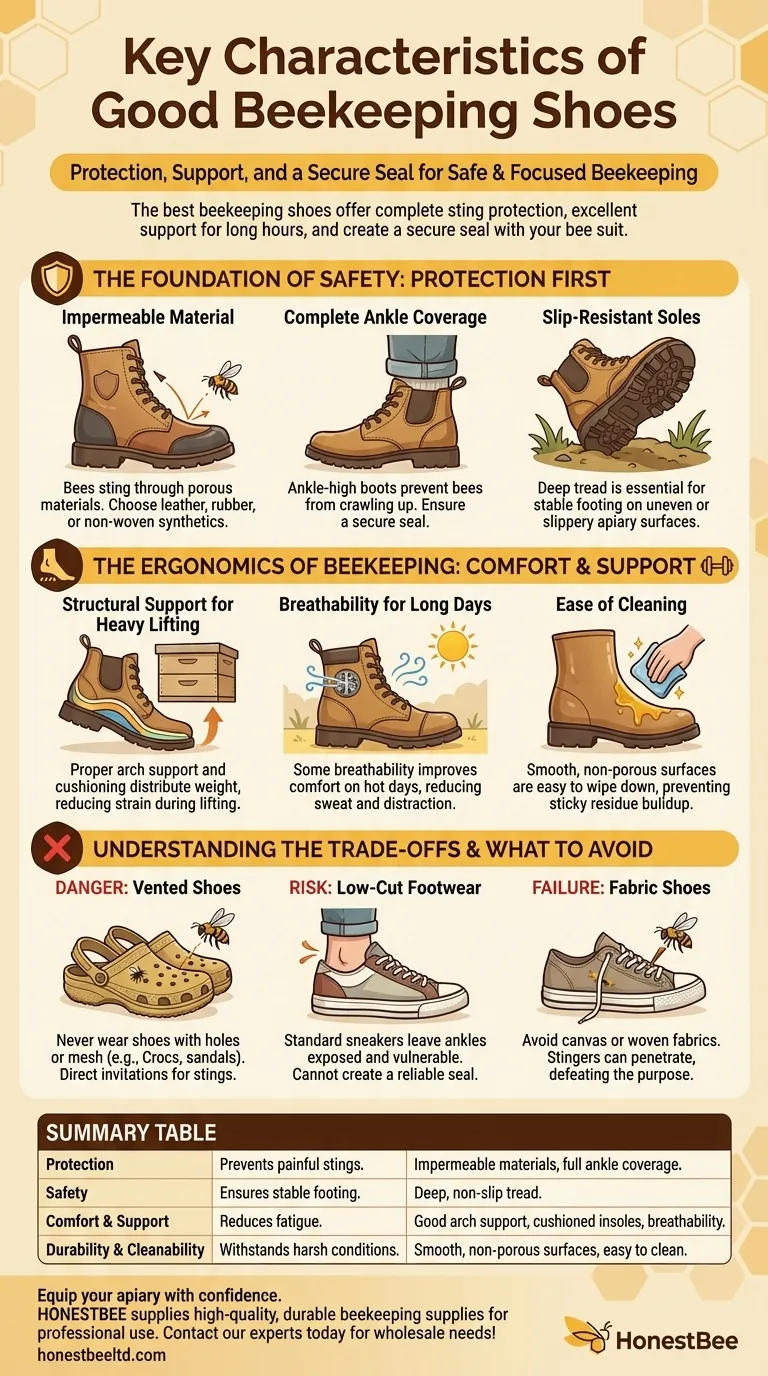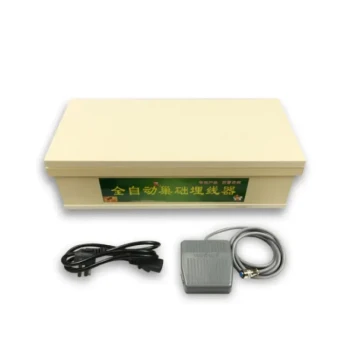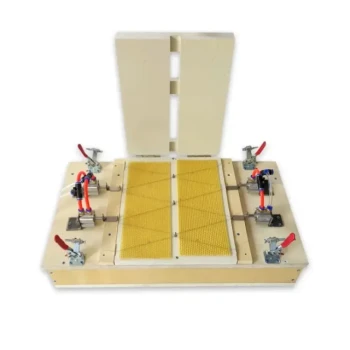The best beekeeping shoes are those that offer complete protection from stings, provide excellent support for long periods of standing and lifting, and create a secure seal with your bee suit. The ideal footwear is typically a light-colored, ankle-high boot made of a smooth, impermeable material like rubber or leather, featuring a non-slip sole.
Your choice of footwear is not just about comfort; it's a critical component of your personal protective equipment. The right shoes eliminate a common entry point for bees, allowing you to work with greater confidence and focus entirely on the health of your hive.

The Foundation of Safety: Protection First
Your primary goal when selecting footwear is to prevent stings. An angry bee will exploit any gap or weakness in your gear, and the feet and ankles are a primary target.
Impermeable Material
Bees can and will sting through porous materials like canvas or mesh. Choose shoes made from leather, rubber, or a similar non-woven synthetic material that a stinger cannot penetrate. Smooth surfaces are also preferable as they give bees fewer places to grip.
Complete Ankle Coverage
The gap between your pant leg and your shoe is the most vulnerable area. Ankle-high boots are the standard for a reason. They ensure you can securely tuck in your bee suit or pants, creating an unbroken seal that prevents bees from crawling up your leg.
Slip-Resistant Soles
Apiaries are often situated on uneven, grassy, or dirt surfaces that can become slippery when wet. A good, deep tread is essential for maintaining stable footing, especially when you are carrying heavy hive boxes filled with bees and honey.
The Ergonomics of Beekeeping: Beyond Just Safety
Beekeeping is a physically demanding activity. Your footwear must support you through long hours of standing, bending, and lifting heavy equipment.
Structural Support for Heavy Lifting
You will be lifting supers that can weigh 50 pounds or more. Shoes with proper arch support and cushioned insoles help distribute this weight, reducing strain on your feet, knees, and lower back.
Breathability for Long Days
Working in a full bee suit on a warm, sunny day can be incredibly hot. While protection is paramount, choosing boots with some degree of breathability will significantly improve your comfort and reduce distractions from sweaty, uncomfortable feet.
Ease of Cleaning
Your shoes will inevitably get covered in honey, wax, and propolis. Footwear with a smooth, non-porous surface is far easier to wipe down and keep clean, preventing the buildup of sticky residue.
Understanding the Trade-offs and What to Avoid
While personal preference plays a role, certain types of footwear introduce unacceptable risks and should always be avoided in the bee yard.
The Clear Danger of Vented Shoes
Never wear shoes with holes or mesh vents, such as Crocs, sandals, or many athletic sneakers. These openings are direct invitations for bees to enter, leading to inevitable and painful stings.
The Risk of Low-Cut Footwear
Standard sneakers or shoes that sit below the ankle are a poor choice. They make it nearly impossible to create a reliable, bee-proof seal with your pants, leaving your ankles exposed and vulnerable.
The Failure of Fabric
Avoid shoes made primarily of canvas or other woven fabrics. A determined bee's stinger can often penetrate these materials, defeating the primary purpose of protective footwear.
Making the Right Choice for Your Goal
Select your footwear based on your specific needs and beekeeping environment.
- If your primary focus is maximum protection: Choose a light-colored, pull-on rubber boot (like a Muck Boot) that extends to the mid-calf.
- If your primary focus is all-around comfort and support: A sturdy, leather work boot that covers the ankle is an excellent and durable choice.
- If your primary focus is working in a very hot climate: Prioritize a breathable leather or synthetic boot, ensuring it still offers full ankle coverage and a solid, impenetrable surface.
Choosing the right shoes transforms them from a potential liability into a trusted piece of equipment that lets you work safely and effectively.
Summary Table:
| Key Characteristic | Why It Matters | What to Look For |
|---|---|---|
| Protection | Prevents painful and dangerous bee stings. | Impermeable materials (rubber, leather); full ankle coverage. |
| Safety | Ensures stable footing on uneven, slippery ground. | Deep, non-slip tread on the sole. |
| Comfort & Support | Reduces fatigue during long hours of lifting and standing. | Good arch support, cushioned insoles, and breathability. |
| Durability & Cleanability | Withstands harsh conditions and is easy to maintain. | Smooth, non-porous surfaces that are easy to wipe clean. |
Equip your apiary with confidence. The right footwear is a critical component of your safety and productivity. At HONESTBEE, we supply commercial apiaries and beekeeping equipment distributors with high-quality, durable beekeeping supplies designed for professional use. Let us help you find the perfect protective gear for your team. Contact our experts today to discuss your wholesale needs!
Visual Guide

Related Products
- Thick PVC Material Waterproof Anti-Slip Wear-Resistant Bee Work Shoes Boots for Garden Outdoor Utility
- Professional Galvanized Hive Strap with Secure Locking Buckle for Beekeeping
- Professional Beekeeping Suit for Kids and Girls Childrens Bee Keeper Suit
- Professional Grade Foldable Beehive Handles
- Heavy Duty Cowboy Beekeeper Hat with Visibility Veil Outdoor Professional Beekeeping Protective Gear
People Also Ask
- What is the importance of ensuring no gaps between pants and boots in beekeeping? Prevent Bee Intrusions & Stay Safe
- What safety precautions should be considered in beekeeping? Essential Protective Gear & Practices
- What are some examples of boots used for beekeeping? Essential Protection for Your Apiary Work
- What should be considered when choosing beekeeping boots? Ensure Maximum Safety and Comfort
- Why is ventilation important in beekeeping shoes? Balance Comfort and Sting Protection



















